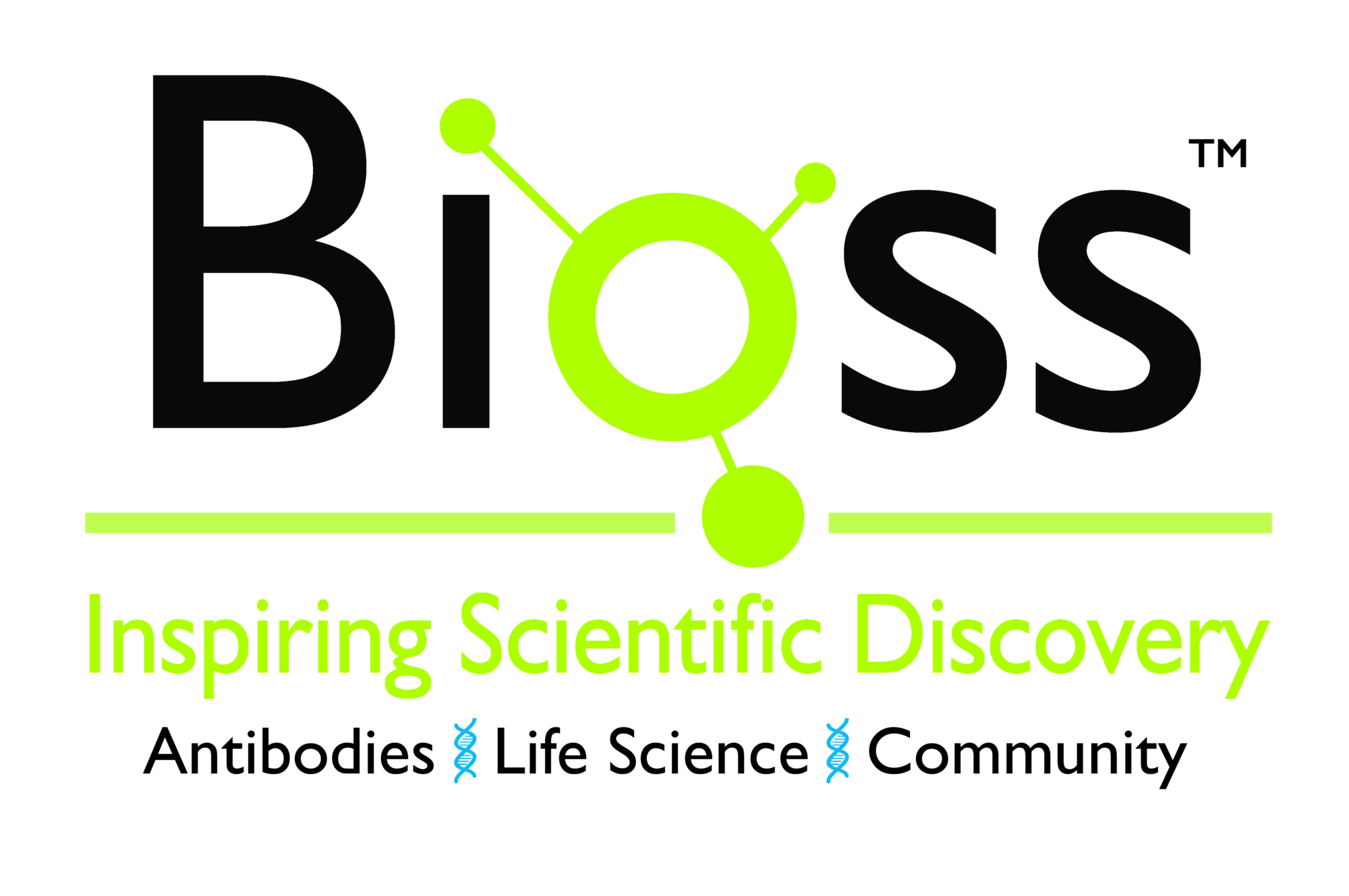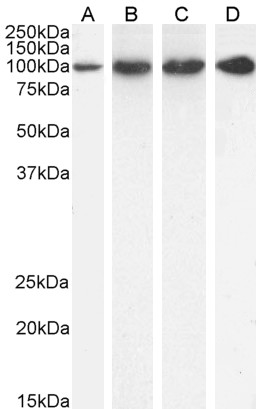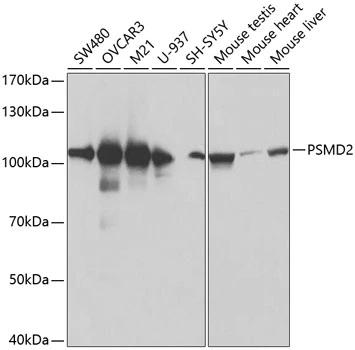PSMD2 antibody
GTX79499
ApplicationsImmunoFluorescence, Western Blot, ImmunoCytoChemistry
Product group Antibodies
ReactivityCanine, Hamster, Human, Monkey, Mouse, Primate, Rat
TargetPSMD2
Overview
- SupplierGeneTex
- Product NamePSMD2 antibody
- Delivery Days Customer9
- Application Supplier NoteWB: 1:500-1:2,000. ICC/IF: 1:250. *Optimal dilutions/concentrations should be determined by the researcher.Not tested in other applications.
- ApplicationsImmunoFluorescence, Western Blot, ImmunoCytoChemistry
- CertificationResearch Use Only
- ClonalityPolyclonal
- ConjugateUnconjugated
- Gene ID5708
- Target namePSMD2
- Target descriptionproteasome 26S subunit ubiquitin receptor, non-ATPase 2
- Target synonymsP97, RPN1, S2, TRAP2, 26S proteasome non-ATPase regulatory subunit 2, 55.11 protein, TNFR-associated protein 2, proteasome (prosome, macropain) 26S subunit, non-ATPase, 2, proteasome 26S subunit, non-ATPase 2, protein 55.11, tumor necrosis factor type 1 receptor-associated protein 2
- HostRabbit
- IsotypeIgG
- Protein IDQ13200
- Protein Name26S proteasome non-ATPase regulatory subunit 2
- Scientific DescriptionThe 26S proteasome is a multicatalytic proteinase complex with a highly ordered structure composed of 2 complexes, a 20S core and a 19S regulator. The 20S core is composed of 4 rings of 28 non-identical subunits; 2 rings are composed of 7 alpha subunits and 2 rings are composed of 7 beta subunits. The 19S regulator is composed of a base, which contains 6 ATPase subunits and 2 non-ATPase subunits, and a lid, which contains up to 10 non-ATPase subunits. Proteasomes are distributed throughout eukaryotic cells at a high concentration and cleave peptides in an ATP/ubiquitin-dependent process in a non-lysosomal pathway. An essential function of a modified proteasome, the immunoproteasome, is the processing of class I MHC peptides. This gene encodes one of the non-ATPase subunits of the 19S regulator lid. In addition to participation in proteasome function, this subunit may also participate in the TNF signalling pathway since it interacts with the tumor necrosis factor type 1 receptor. A pseudogene has been identified on chromosome 1. Alternative splicing results in multiple transcript variants of this gene. [provided by RefSeq, Jul 2013]
- ReactivityCanine, Hamster, Human, Monkey, Mouse, Primate, Rat
- Storage Instruction-20°C or -80°C,2°C to 8°C
- UNSPSC12352203






